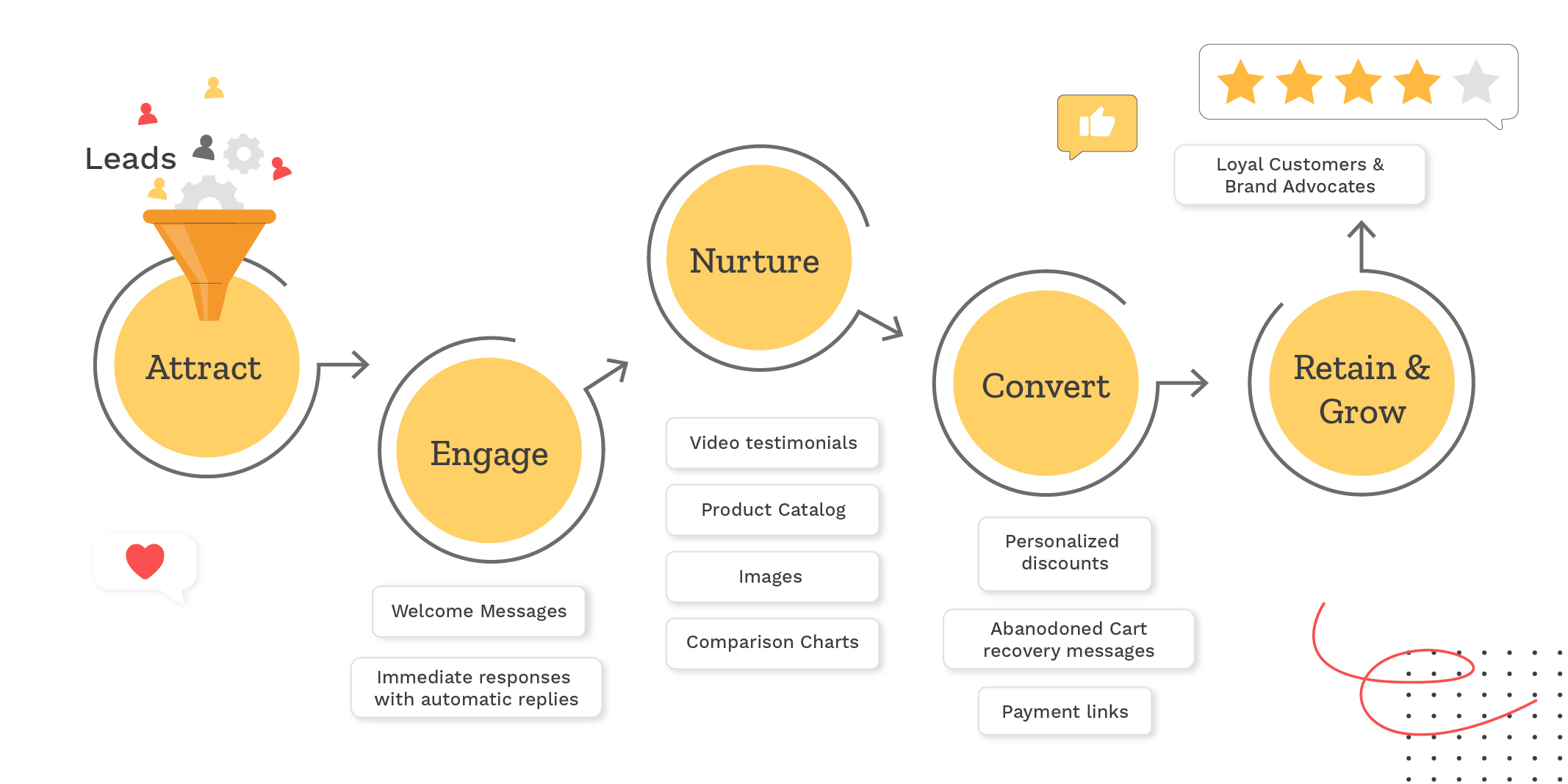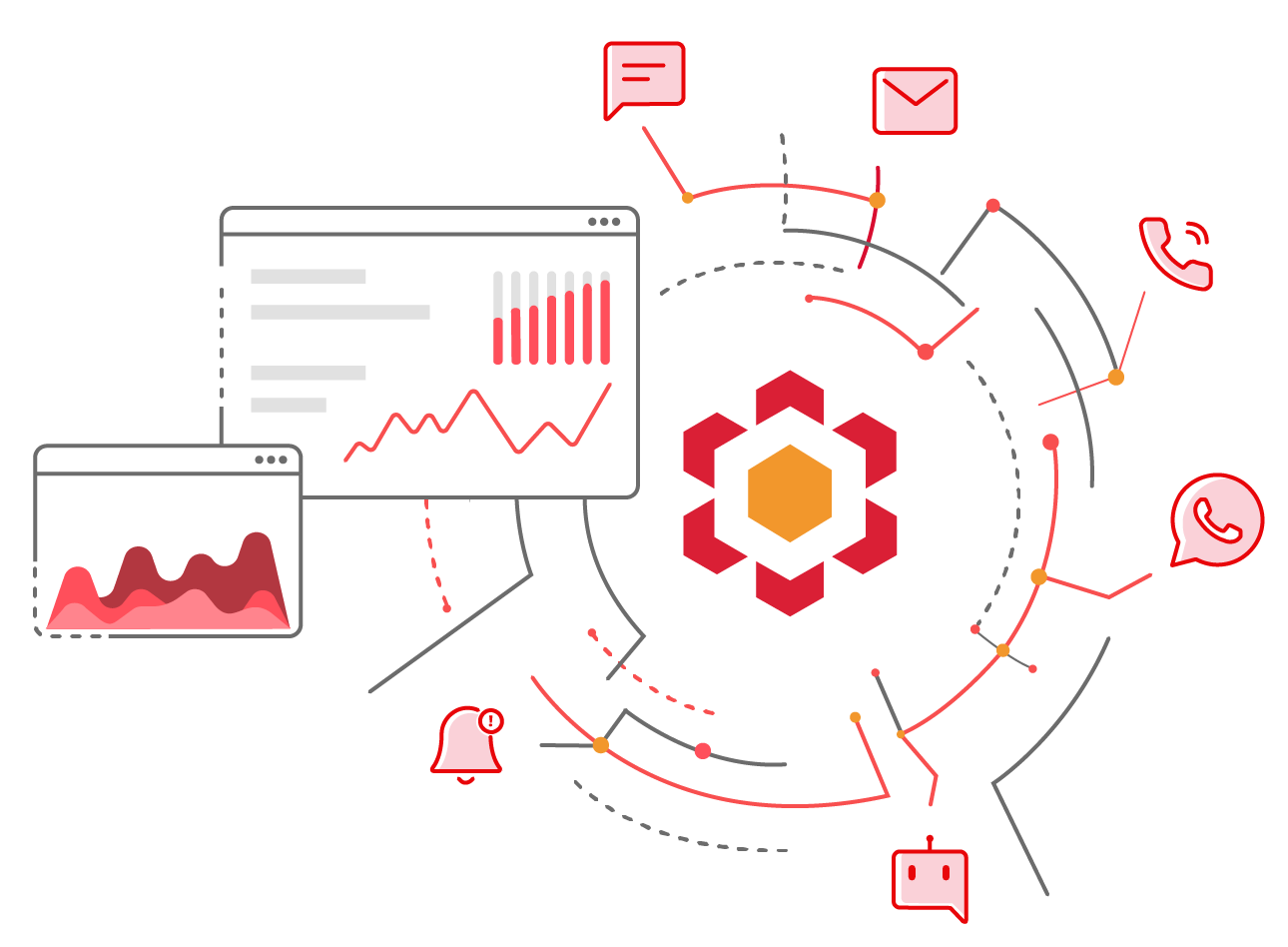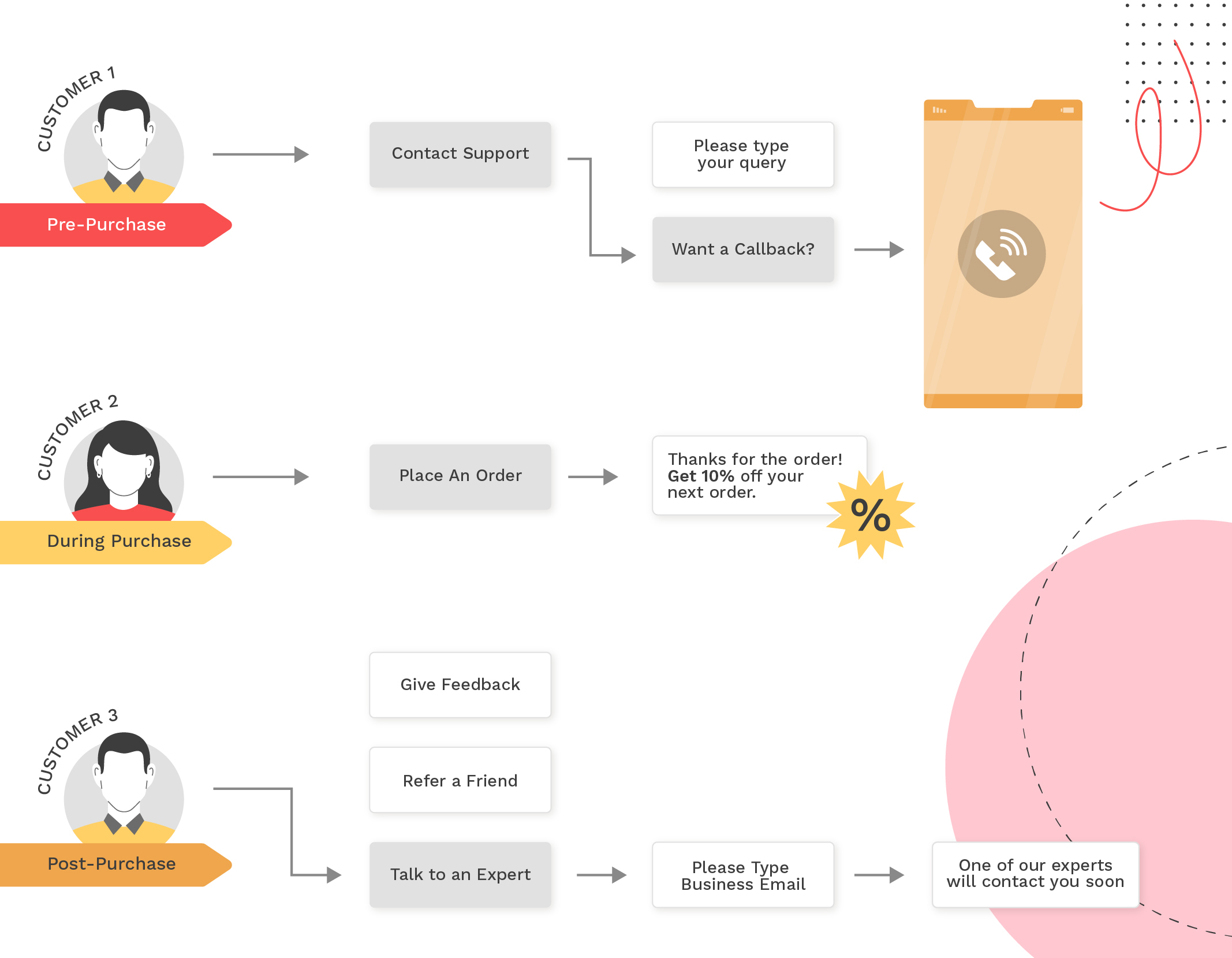The world is changing, customers are evolving, and so are CX trends. Impersonal interactions have become outdated and ineffective. Instead, compassion, empathy, and customer sentiments are front and center of a modern CX approach. As a result, industry leaders are finding conversational strategy beneficial for customer acquisition, engagement, conversion, and retention.
If you’re still preaching the benefits of your products or bombarding customers with marketing messages, it’s likely you’re stuck in the last decade. Digital has emerged as a preferred channel in recent years, and conversational marketing strategy has become essential for business success. Since customers prefer a low-effort journey, conversational chatbots and messaging channels have become critical tools for providing seamless experiences. A comprehensive conversational engagement and messaging strategy ensures there are no information silos and customers do not have disjointed experiences.

What is a Conversational Strategy?
A conversational strategy refers to the use of meaningful customer conversations to drive engagement and revenue. When customers interact with your brand, it’s an opportunity to guide them towards conversion. Conversational marketing strategy helps businesses reduce friction along the buying journey and win over customers by delivering memorable experiences.
Conversational strategies should be aligned with business objectives. For example, if customer retention is the goal, the focus should be more on the post-purchase journey – timely order notifications, delivery updates, promptly addressing customer concerns, collecting feedback, and loyalty programs.
A conversational growth strategy involves identifying suitable conversational messaging apps and chatbots to engage customers. Moreover, it helps derive strategic insights from past customer interactions and send the right message at the right time to maximize engagement.
EBOOK
Introduction to the Whatsapp Business Platform for US Brands
Embrace the future today—connect with us to seize the WhatsApp advantage.

Why do Businesses Need A Conversational Growth Strategy?
A conversational growth strategy elevates the performance of the marketing, sales, and support departments, resulting in business success. More importantly, it eliminates roadblocks across the sales funnel. Let’s take a look at a few common challenges and how conversational marketing helps address them.
Users have questions but are hesitant to write an email or call you.
With Conversational channels, it’s easier for users to connect with agents. The interactive features of messaging platforms, such as WhatsApp buttons or auto-replies, make brand interactions effortless.
Users find it difficult to get the information they need.
Users browsing your website may struggle to find details such as pricing, use cases, or compatibility with their existing systems. They may have to navigate various sections of the website to get all the required information. Conversational AI chatbots answer all questions within one platform, helping users make quick decisions.
Users are not filling out forms, resulting in missed opportunities for Sales
Users may find filling out forms tedious and leave the website without sharing their information. This results in lost opportunities to nurture leads and convert them into customers. With a conversational strategy, a chatbot can easily collect customer data and send relevant messages based on the data.
Explore Conversational Marketing examples of leading brands

How to Build a Succesful Conversational Marketing Strategy?
Step 1: Identify the Target Audience and Examine their Customer Journey
If you want your CX efforts to be effective, you must be clear about who your target audience is. Define your buyer personas based on demographic, behavioral, and psychographic information. Think about the pain points and goals of these personas and see how your products/services address those needs.
Evaluate the customer journey to identify challenges and bottlenecks that can be mitigated by using conversational tools. If you find that users are not aware of your products, run ‘click to chat’ ads on social media and guide them to explore your products. Add conversation elements to minimize steps and simplify processes whether customers want to complete a purchase, seek information, or solve issues.
Step 2: Engage More Leads and Use the Right Messaging
With conversational bots, you can be available 24/7 and engage more leads without agent intervention. 83% of customers expect an immediate interaction upon contacting a business. Chatbots provide prompt pre-programmed responses, resulting in a positive customer experience.
Make sure you direct your website visitors to chat experiences by embedding WhatsApp message buttons on high-intent webpages, the Homepage, the Contact Us Page, and other key sections of the website.
When your website visitor can easily start a conversation with you, it improves engagement and conversion rates. Moreover, you can easily share relevant information such as product catalog, pricing information, and your location through the rich messaging features of conversational apps. For example, with WhatsApp, you can send video, audio, location, contact, and documents for easy communication. You can share video tutorials or a PDF of your brochure so customers can easily understand your products. Use emojis or language that reflects your brand voice to ensure a consistent brand experience across channels.
CUSTOMER SUCCESS STORY
Kaleyra Helps Isansys Save Lives
Explore how Isansys, a leading digital healthcare company uses Kaleyra’s WhatsApp API solution to improve patient experiences.

Step 3: Encourage Dialog and Guide Customers Across the Funnel
More than 70% of customers expect a conversational experience when they connect with a brand. They value two-way conversations instead of receiving marketing messages that serve them little purpose. With conversational apps, customers can easily get answers. For example, if a customer wants to return an item, they can chat with an agent and ask about the refund policy. They can go on to return the item or enquire the nearest store where they can exchange the item.
Make sure your customers know what to expect at each stage of the journey. For example, if a customer wants to make an appointment, share the available time slots and send timely reminders to avoid missed appointments. Once a customer places an order, send automated messages for order confirmation and delivery updates. Similarly, travel companies can share flight status so that customers can stay in the know.
Step 4: Accelerate the Process of Understanding Customer Needs and Personalization
With Conversational Marketing, you can instantly qualify leads and intelligently route them to the right agent or salesperson. Bots can ask a series of questions to understand customer requirements and make specific product recommendations.
For example, if a customer contacts an insurance company, bots can ask whether the customer is interested in motor or home insurance. If the customer chooses home insurance, the bot can collect data such as age and income and route leads based on the information to the right salesperson.
Once you gain a deeper understanding of customers, send personalized messages to increase the likelihood of conversions. You can send customized offers and product information to boost engagement. By gaining a comprehensive view of customers, you can identify purchase patterns and employ conversational tactics to entice repeat purchases or contract renewals.
Step 5: Monitor Results and Optimize
After crafting a conversational strategy, monitoring key metrics to assess performance is important. Track metrics such as website conversion rate, Customer Satisfaction (CSAT) score, and First contact resolution rate.
Identify areas of improvement and optimize your conversational marketing strategy based on the results. For example, if you find that customers interested in a certain product are responding better to your conversational efforts, focus on improving their customer experience. Consider using an FAQ bot that automatically answers questions and make sure all the responses are crisp, accurate, and compelling. Similarly, if you find product adoption is low, consider scheduling product demos immediately after purchase, letting customers know that you’ll be there to support them every step of the way.
With Kaleyra’s cloud communication platform, you can effortlessly implement a winning conversational strategy and improve your bottom line. Want to see your customer engagement skyrocket through conversational experiences? Talk to our experts to learn how.

Kalaivani Narayanan
Content Specialist
Supercharge Your Communication!
Get in touch with our experts who strive hard to bring the very best in cloud communications technology to you.


